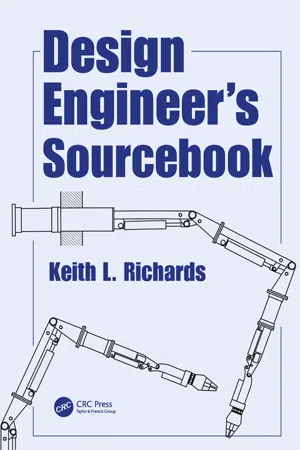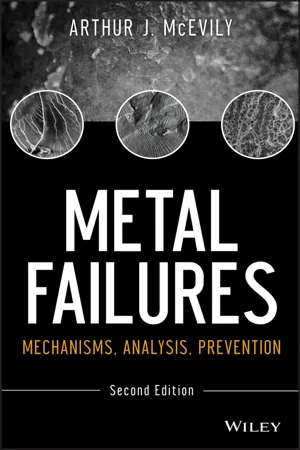Technology & Engineering
Mohr's Circle for Strain
Mohr's Circle for Strain is a graphical method used to analyze the state of strain at a point in a material. It represents the normal and shear strains on two perpendicular planes and provides a visual representation of the principal strains and their orientations. By using Mohr's Circle, engineers can determine the maximum and minimum strains and the orientation of the planes on which they occur.
Written by Perlego with AI-assistance
Related key terms
Related key terms
1 of 4
Related key terms
1 of 3
3 Key excerpts on "Mohr's Circle for Strain"
- eBook - ePub
- K. L. Richards(Author)
- 2017(Publication Date)
- CRC Press(Publisher)
14Introduction to Analytical Stress Analysis and the Use of Mohr’s Circle
14.1 Introduction
Of all the graphical methods used by an engineer for visualizing problems, there is little doubt that Mohr’s circle is the best known; in its various applications it is an aid to visualizing a stress or strain problem.The object of this chapter is to explore with a reasonable thoroughness three important uses of Morh’s circle. These applications confront the engineer and designer in many branches of mechanical and structural engineering.In the development of the circle construction, it has been considered desirable to present a concise account of the underlying theory. It is possible for the reader more interested in applications to accept these results and go straight to those sections dealing with the constructions and applications.Nearly all textbooks, of necessity, deal with the circle in too cursory a manner and leave many detailed questions unanswered. It is hoped that this chapter devoted solely to the circle will answer more of these questions. In illustrating the text with examples of a practical nature, other topics of strength of materials will be quoted, the background of which can be found in the most strength of materials textbooks. - eBook - ePub
Metal Failures
Mechanisms, Analysis, Prevention
- Arthur J. McEvily, Jirapong Kasivitamnuay(Authors)
- 2013(Publication Date)
- Wiley-Interscience(Publisher)
Fig. 2-4. Shear stress on a plane whose normal is at 45° to the principal stresses. (a) and ; (b) and ; and (c) and .D. Mohr Circles
The state of stress at a point can be conveniently depicted by means of a Mohr circle (see Appendix 2-1 for a derivation). The axes for the Mohr circle plot are the shear stress (ordinate) and the normal stress (abscissa). Recall that the angle between two directions in the plot is twice the actual angle in the stressed body. Examples of Mohr circles for tension, compression, and pure shear (torsional loading) are given in Figs. 2.5 a to Fig. 2-5 c, respectively. The stresses acting on an element under pure shear (torsion) are shown in Fig. 2-6 . The shear stresses shown are defined as positive when they act in a positive direction on a positive face and as negative when they act in a negative direction on a positive face (the face further along the positive direction of the x- or y-axis is the positive face). Since all the shear stresses shown are positive, a question arises as to how to plot them on the Mohr circle diagram. Note that the shear stress acts on a plane whose normal is 45° counterclockwise from the first principal direction, . On the Mohr circle this shear stress is therefore plotted at 90° counterclockwise from , and the shear stress is plotted at 90° clockwise from .Fig. 2-5.Mohr circles. (a) Uniaxial tension. (b) Uniaxial compression. (c) Pure shear (torsion).Fig. 2-6.Construction of a Mohr circle for a pure shear stress state.III. Strain
The deformation of a body can result in a change in size (Fig. 2-7 a) as well as a change in shape (Fig. 2-7 b).Fig. 2-7.Types of deformation. (a) Change in size. (b) Change in shape.The engineering normal strain is defined as (see Fig. 2-8 )2-9where is the original length and is the change in length.Fig. 2-8. - eBook - ePub
- Jonathan T. H. Wu(Author)
- 2019(Publication Date)
- Wiley-Blackwell(Publisher)
Figure 1.6 ). However, we shall continue to make use of “stress” for the design and analysis of earth structures because it has proven to be an extremely useful tool. Keep in mind, however, that stress in soil is merely a “defined” parameter. When referring to stresses in a soil, it should be viewed on a macro‐scale, and the soil is considered a continuum for the purposes of engineering analysis.Stress at a point in a soil mass: (a) reality (micro‐scale) and (b) idealized as being a uniform continuum (macro‐scale)Figure 1.61.1.3 Mohr Circle of Stress
The Mohr circle of stress, as shown in Figure 1.7 (a), is a plot of normal stress vs. shear stress of all permissible stresses at a point under two‐dimensional conditions. Every point on a Mohr circle represents the normal and shear stresses on a particular plane at that point. A Mohr circle of stress therefore can be regarded as a graphical representation of stresses at a point under two‐dimensional conditions. There are an infinite number of points on a Mohr circle, and each point corresponds to a plane passing through the point of interest. Two distinct planes exist on a Mohr circle where shear stress . These planes are called principal planes. The stresses on the principal planes are known as principal stresses, denoted by σ1and σ3, as shown in Figure 1.7 (a). The principal stress σ1is the largest normal stress (or major principal stress), whereas the principal stress σ3is the smallest normal stress (or minor principal stress).(a) Two‐dimensional representation of stress at a point by a Mohr circle of stress and (b) sign conventions of normal and shear stresses for plotting Mohr circlesFigure 1.7Figure 1.7 (b) shows the sign conventions for plotting a Mohr circle of stress. In soil mechanics, we denote compressive normal stress as positive and tensile normal stress as negative, which is opposite to the sign convention commonly used in structural mechanics. We do so because soil has little tensile resistance, and most normal stresses in geotechnical engineering analysis are compressive. The sign convention of considering compressive stress as positive avoids having to show nearly every normal stress in geotechnical engineering analysis with a negative sign. A shear stress that makes a clockwise rotation about any point outside of the plane is considered a positive shear stress (see Figure 1.7
Index pages curate the most relevant extracts from our library of academic textbooks. They’ve been created using an in-house natural language model (NLM), each adding context and meaning to key research topics.
Explore more topic indexes
Explore more topic indexes
1 of 6
Explore more topic indexes
1 of 4


